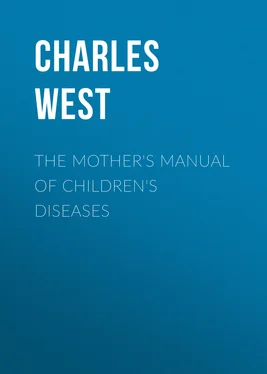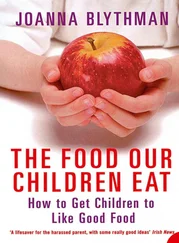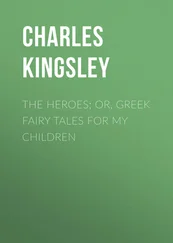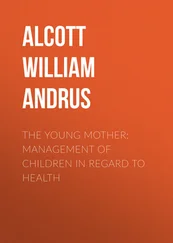Charles West - The Mother's Manual of Children's Diseases
Здесь есть возможность читать онлайн «Charles West - The Mother's Manual of Children's Diseases» — ознакомительный отрывок электронной книги совершенно бесплатно, а после прочтения отрывка купить полную версию. В некоторых случаях можно слушать аудио, скачать через торрент в формате fb2 и присутствует краткое содержание. Издательство: Иностранный паблик, Жанр: Руководства, Медицина, foreign_desc, на английском языке. Описание произведения, (предисловие) а так же отзывы посетителей доступны на портале библиотеки ЛибКат.
- Название:The Mother's Manual of Children's Diseases
- Автор:
- Издательство:Иностранный паблик
- Жанр:
- Год:неизвестен
- ISBN:нет данных
- Рейтинг книги:5 / 5. Голосов: 1
-
Избранное:Добавить в избранное
- Отзывы:
-
Ваша оценка:
- 100
- 1
- 2
- 3
- 4
- 5
The Mother's Manual of Children's Diseases: краткое содержание, описание и аннотация
Предлагаем к чтению аннотацию, описание, краткое содержание или предисловие (зависит от того, что написал сам автор книги «The Mother's Manual of Children's Diseases»). Если вы не нашли необходимую информацию о книге — напишите в комментариях, мы постараемся отыскать её.
The Mother's Manual of Children's Diseases — читать онлайн ознакомительный отрывок
Ниже представлен текст книги, разбитый по страницам. Система сохранения места последней прочитанной страницы, позволяет с удобством читать онлайн бесплатно книгу «The Mother's Manual of Children's Diseases», без необходимости каждый раз заново искать на чём Вы остановились. Поставьте закладку, и сможете в любой момент перейти на страницу, на которой закончили чтение.
Интервал:
Закладка:
Charles West
The Mother's Manual of Children's Diseases
THE MOTHER'S MANUAL
OF
CHILDREN'S DISEASES
PART I.
INTRODUCTORY
CHAPTER I.
ON THE MORTALITY OF CHILDREN, AND ITS CAUSES
The purpose of this little book will probably be best attained, and needless repetition best avoided, if we begin by inquiring very briefly why so many children die, what general signs indicate that they are ill, and what general rules can be laid down for their management in sickness.
The first of these inquiries would be as useless as it would be sad, if the rate of infant mortality were fixed by determinate laws, such as those which limit the stature of man or the age to which he can attain.
But this is not so; the mortality in early life varies widely in different countries, in different parts of the same country, and in the same country at different times. Thus, while in some parts of Germany the mortality under one year was recently as high as 25 to 30 per cent. of the total births, and in England as 15, it was only a little above 10 per cent. in Norway. Infantile mortality is higher in manufacturing districts, lower in those which are agricultural, and varies from 16 per cent. in Lancashire to 9 in Dorsetshire. It is then evident that mortality in infancy is in part dependent on remediable causes; and of this there is no better proof than the fact that the mortality in England under one year has been reduced from 15 per cent. in 1872 to 13 per cent. in 1882.
It would lead us far from any practical purpose if we were to examine into all the causes which govern the liability to disease and death during infancy and childhood, in the different ranks of society. We must therefore limit our inquiry to those conditions which are met with in the class to which my readers may fairly be assumed to belong.
First among the causes of sickly infancy and premature death may be mentioned the intermarriage of near relatives. The experience of the breeders of animals, who, by what is termed breeding in and in, undoubtedly obtain certain qualities of speed, or strength, or beauty, does not apply here. They select for their experiments animals whose qualities in these respects are pre-eminent, and eliminate from them all who do not occupy the first rank. In family intermarriages, however, it is rare that any consideration is regarded, save that of wealth; and the fact remains, explain it as we may, that the intermarriage of near relatives during several successive generations is followed by a marked deterioration of the children, physical, mental, and moral; and by the intensifying of any hereditary predisposition to consumption, scrofula, and other constitutional ailments which form the second great cause of early sickness and mortality.
These are facts known to all, which yet it is not easy to represent by figures. All the world is aware that consumption is hereditary, that consumptive parents are more likely than others to have consumptive children; and a fourth of all the patients admitted into the Hospital for Consumption at Brompton stated that the disease had existed in one or other of their parents. 1 1 This is the proportion stated in Quain's Dictionary of Medicine , to which the writer, Dr. Theodore Williams, adds that of 1,000 cases in the upper classes 12 per cent. showed direct hereditary predisposition, and 48 per cent. family predisposition.
Scrofula, which is another disease closely allied to consumption, is hereditary also; and hip disease, disease of the spine, abscesses, and enlarged glands in any members of a family, point to risks for the offspring which should not be forgotten, how much soever mental endowments, personal beauty, or the charms of disposition may be considered, and sometimes reasonably enough, to outweigh them. The same liability exists with reference to epilepsy, insanity, and the whole class of affections of the nervous system. Parents inquire, with no misplaced solicitude, what is her fortune, or what are the pecuniary resources of him to whom they are asked to entrust their son's or daughter's future. Believe me, the question—what is the health of his family, or of hers? is consumption hereditary, or scrofula, or epilepsy, or insanity?—is of far greater moment, and touches much more nearly the future happiness of those we love.
These two points regard the future parents themselves; but there are other conditions on which the health of children to a great degree depends; and of these the two most important are the dwelling they inhabit, and the food they eat.
I do not refer here to the dwellings of the poor, situated in unhealthy localities, where fresh air does not enter, where the rays of the sun do not penetrate, with defective drainage and imperfect water-supply; but I speak of the nurseries of well-to-do people. 'This will do for our bedroom, and that will make a nice spare room, and that will do for the children,' is what one often hears. Had you rare plants which cost much money to obtain, which needed sunlight, warmth, and air, would you not consider anxiously the position of your conservatory, and take much pains to insure that nothing should be wanting that could help their development, so that you might feast your eyes upon their beauty, or delight yourselves with their fragrance? And yet a room at the top of the house, one of the attics perhaps, is too often destined for the little one and its nurse; or if there are two or three children, one small room is set apart for the day nursery, and a second, probably with a different aspect, for a sleeping room, and so small that it does not furnish the needed five hundred cubic feet of air for each. And as a consequence, the children are ailing, any predisposition in them to hereditary disease is fostered, they have no strength to battle against any acute illness that may befall them, and yet surprise is felt that the doctor is never out of the house. 2 2 Many useful suggestions will be found in Mrs. Gladstone's little tract, Healthy Nurseries and Bedrooms , published as one of the Health Exhibition Handbooks.
It is needless to dwell on the hand-feeding of infants as one of the great causes of mortality in infancy, and of sickliness in later life. The statistics of Foundling Hospitals bear sad testimony to the fact of its dangers, and the researches of physicians show that a peculiar form of disease is produced by it, attended by symptoms, and giving rise to appearances after death, peculiar to the form of slow starvation from which the infant has perished. I will add, because it is not generally known, one fresh illustration of the influence of artificial feeding in aggravating the mortality of infants. In Berlin the certificates of death of all infants under the age of one year, are required to state whether the little one had been brought up at the breast, or on some kind or other of artificial food. Of ten thousand children dying under the age of one year, one-fourth had been brought up at the breast, three-fourths by hand. 3 3 The actual numbers are 2,628 and 7,646. See Generalbericht ueber das Medizinal-und Sanitätswesen der Stadt Berlin im Jahre 1881 . 8vo. Berlin 1883, p. 19.
It is, as I said in the preface, no part of my plan to enter on any details with reference to the management of children in health. It may, therefore, suffice to have pointed out the four great causes of preventible disease among the wealthier classes of society; namely, the intermarriage of near relatives, the transmission of constitutional taint, the insanitary condition of the dwelling, and the injudicious selection of the food of the infant.
CHAPTER II.
THE GENERAL SIGNS OF DISEASE IN INFANCY AND CHILDHOOD
Интервал:
Закладка:
Похожие книги на «The Mother's Manual of Children's Diseases»
Представляем Вашему вниманию похожие книги на «The Mother's Manual of Children's Diseases» списком для выбора. Мы отобрали схожую по названию и смыслу литературу в надежде предоставить читателям больше вариантов отыскать новые, интересные, ещё непрочитанные произведения.
Обсуждение, отзывы о книге «The Mother's Manual of Children's Diseases» и просто собственные мнения читателей. Оставьте ваши комментарии, напишите, что Вы думаете о произведении, его смысле или главных героях. Укажите что конкретно понравилось, а что нет, и почему Вы так считаете.











